At first glance, a seagull is a seagull is a seagull. But spend some time on the beach, and it becomes very apparent that there are quite a variety of seagulls in the air or waddling along the sand.
The marvelous diversity of seabirds on the beach is not limited to gulls. Terns are common as well, and Brown Pelicans may be the most recognizable shorebird there is.
This list is not even close to complete, but at least it’s a start.
Ring-billed Gull
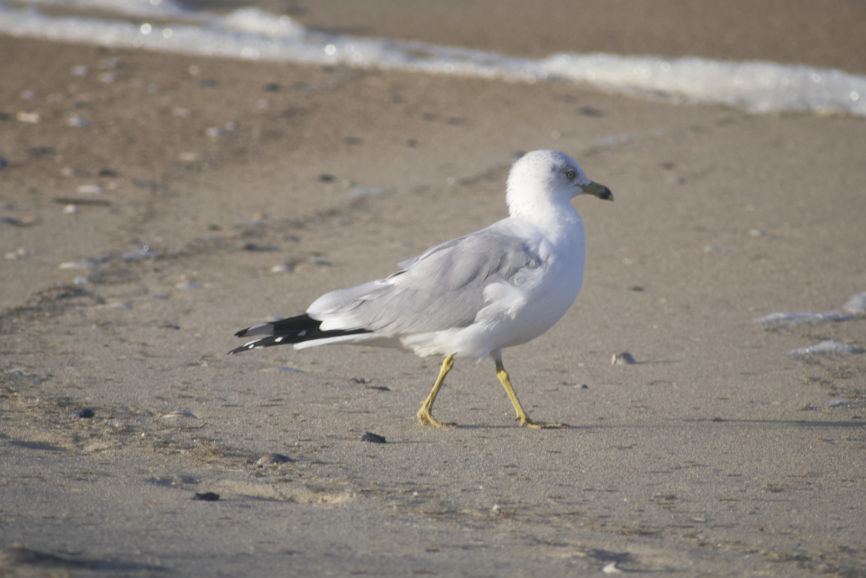
One of the most common gulls along the Outer Banks, ring-billed gulls have a distinctive black ring on their beaks. Although very common on the Outer Banks, the ring-billed gull is the most likely gull to be seen further inland. Their number apparently have been increasing, probably because they are master scavengers and are seemingly comfortable around humans. They will very often be seen swarming around garbage dumps and scavenging at shopping centers.
Laughing Gull
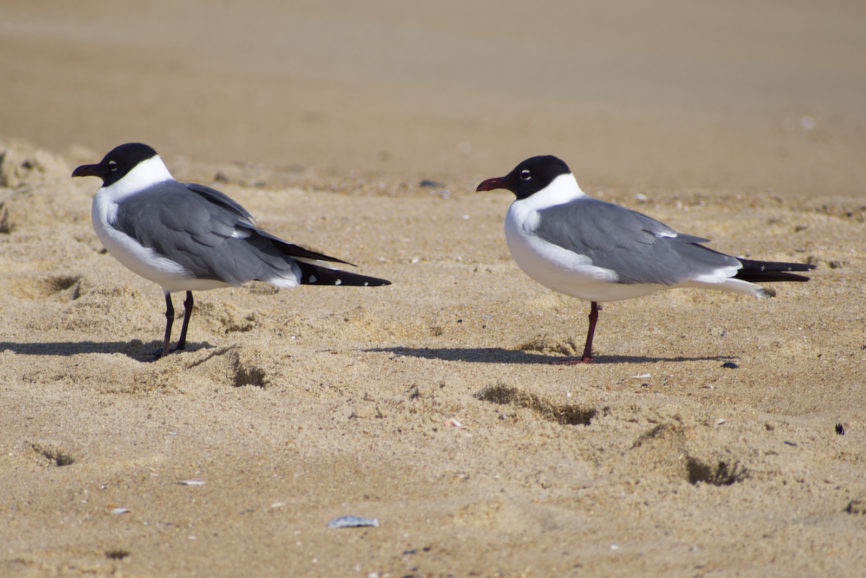
Late spring, summer, and fall, the Laughing Gull is the gull that everyone sees on Outer Banks beaches. Considered a medium-sized gull, its black head with a red beak and gray back and white belly make it pretty distinctive. This gull has a very distinctive laughing-like call—hence the name.
One of the few gulls that breeds in North Carolina, in the winter it does migrate, so it is uncommon to see laughing gulls after mid-October.
Lesser Black-backed Gull
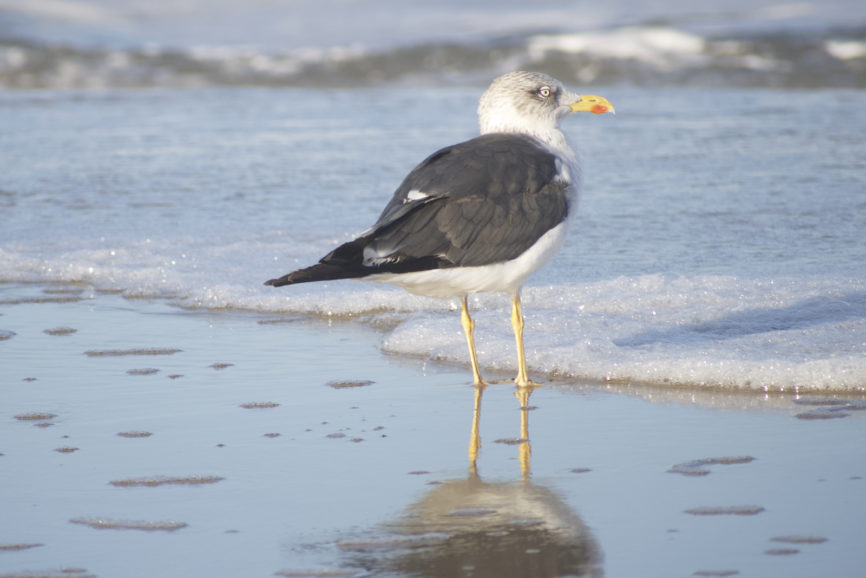
Considered a European gull because that is where it breeds, according to a number of sources, the number of lesser black-backed gulls has been dramatically increasing over the past 20-30 years in coastal North Carolina and especially on the Outer Banks.
Somewhat uncommon in the summer—they don’t breed here—in fall and winter they’re frequently seen on our beaches. It’s one of the larger gulls, although not as large as the great black-backed gull. It does, of course, have a black back, but another distinctive feature is the yellow bill with the bright red spot. It’s called a red gonys spot, although it is unclear where the word gonys originated.
Great Black-backed Gull
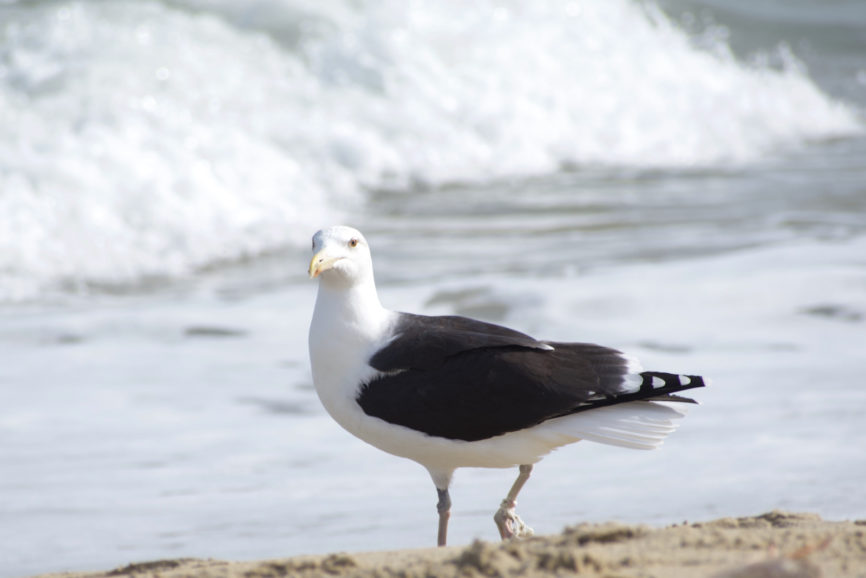
With a wing span sometimes greater than five feet, the Great Black-backed gull is the largest gull in the world. Its size is distinctive and very noticeable. Like the lesser-blacked gull, there is a red gonys spot on a yellow bill.
Great Black-backed gulls tend to have feeding areas to themselves; it isn’t so much that they chase other birds away; rather other birds don’t challenge them.
More common on the Outer Banks in the fall and winter, its nesting behavior has been changing, and a few nesting pairs do breed locally.
Royal Tern
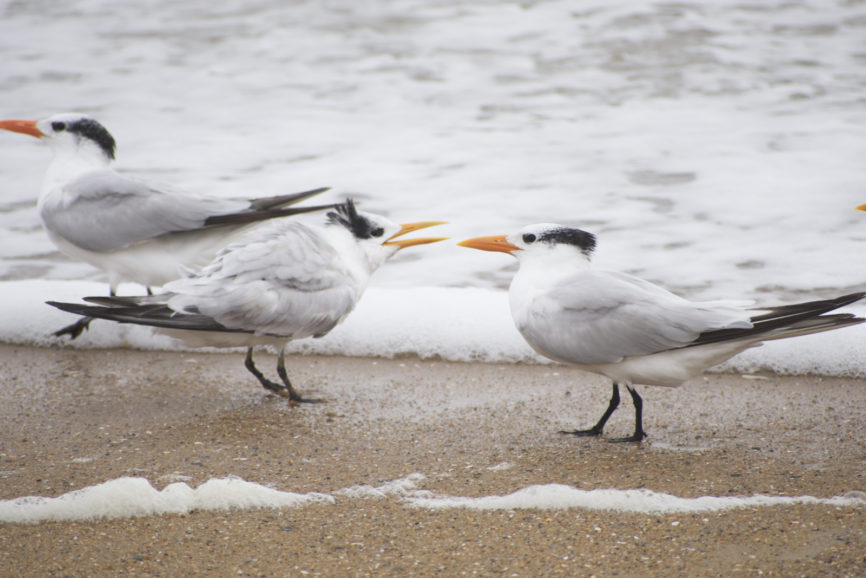
With its black crown and bright orange beak, the Royal Tern stands out when surrounded by other birds on the beach. The head feathers have almost been combed back so that their feather stick straight out from the back of their head.
As terns go, the Royal Tern is pretty good sized—the second largest in the world. Only the Caspian tern is larger, which is not typically seen on the Outer Banks. The best chance to see a Caspian tern is fall or winter at Pea Island National Wildlife Refuge.
A fun bird to watch on land. They squawk and scream at each other—almost as though they’re arguing.
Forster’s Tern
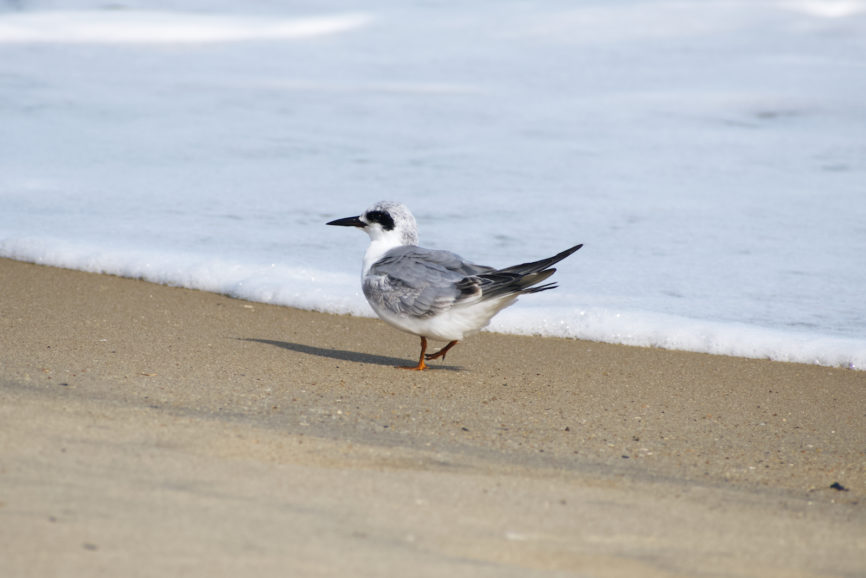
A very quick flyer, with darting sudden drops to the water for feeding. During the summer, Forster’s Terns are around, but it is rare to see them on the beach. At that time of the year, they are tending to breeding and nests that are along the area’s sounds. During fall and winter, though, they come to the beach to nest and feed and are fairly common at that time of the year.
In-flight Forster’s Terns have a long forked tail. During the summer, when breeding, the top of their head is black, the beak orange with a black tip. In fall and winter, their heads are gray, and their beak is all black.
Brown Pelican
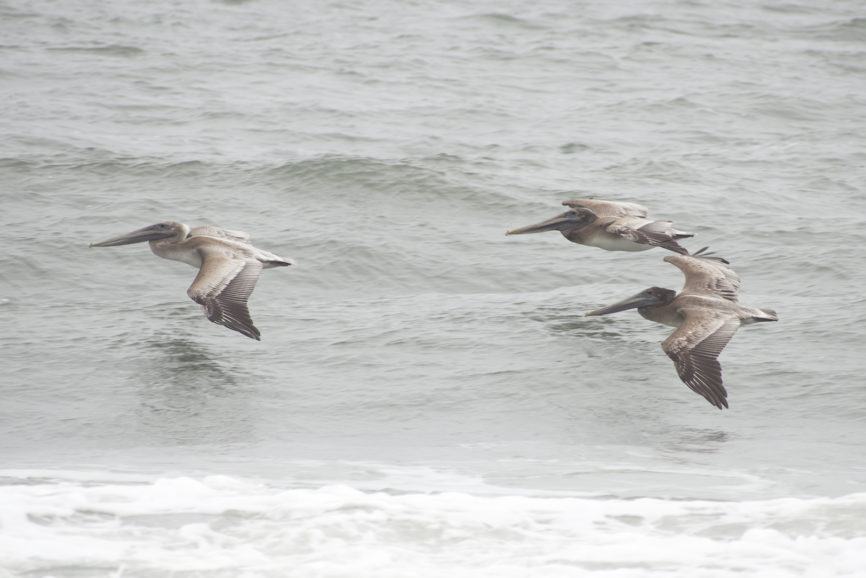
Gliding gracefully just above the water, anyone who has been to an Outer Banks Beach has seen a Brown Pelican. Although graceful in flight, when feeding they seem to crash into the water randomly. That’s by design, though. What they are doing is stunning the fish on the surface to be scooped up into their bill.
The Brown Pelican is an excellent example of a species that was almost wiped out by the insecticide DDT but has subsequently made a spectacular recovery. Eggs laid by birds that have DDT in their system have very thin shells; Brown Pelicans incubate their eggs by standing on them, and the thin shells when DDT was in use could not handle the weight of the adult birds on them.





